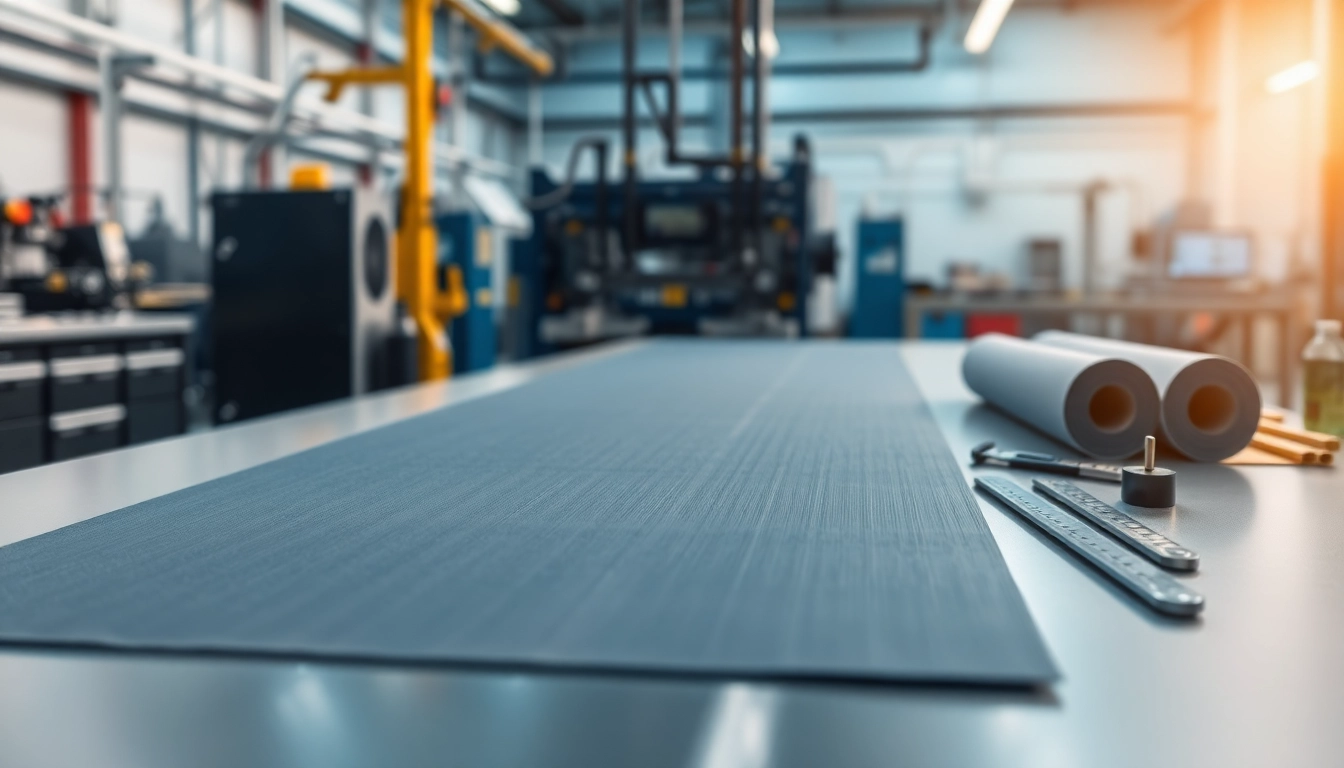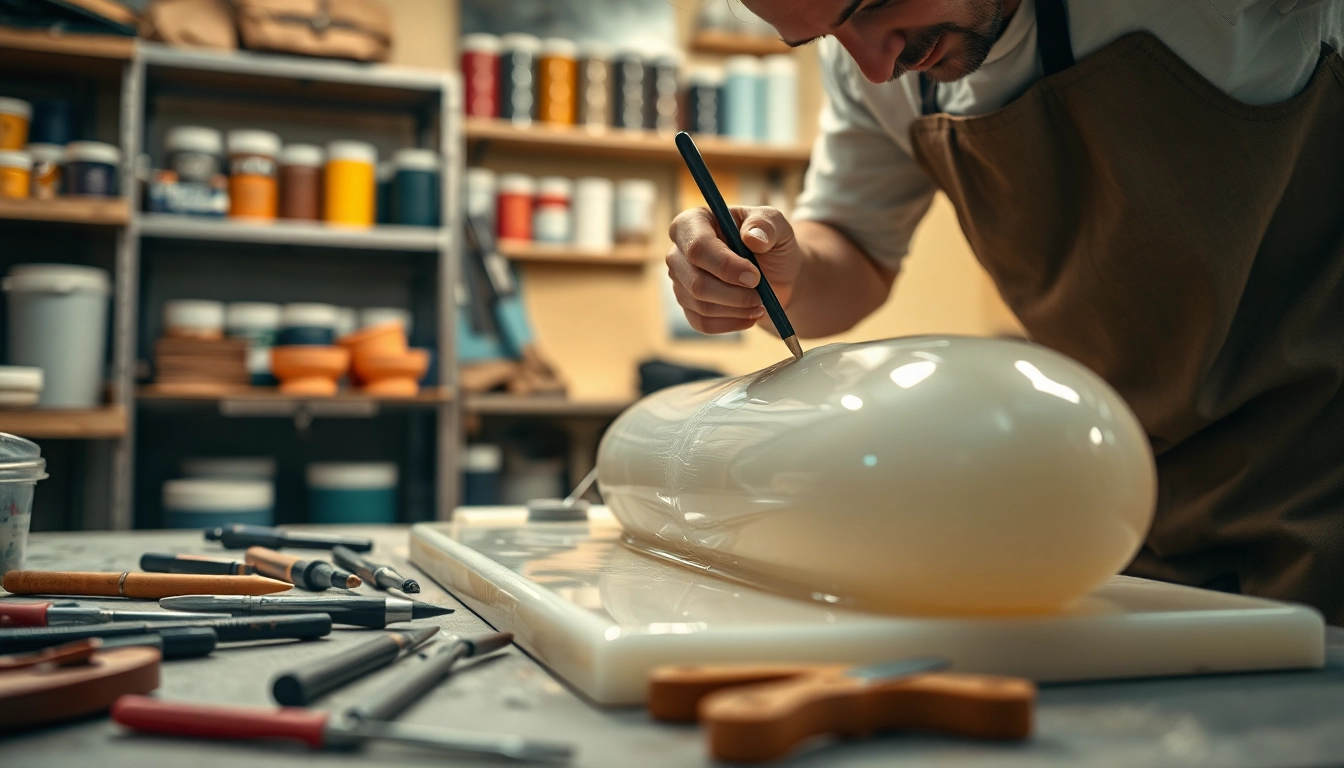Understanding Infusion Resins
What are Infusion Resins?
Infusion resins are specialized materials used in the manufacturing of composite structures through a process known as resin infusion, which combines low-viscosity resins with fibrous materials under vacuum conditions. The resin is introduced into a dry fiber laminate, creating a high-strength, lightweight component suitable for various applications. The infusion process ensures uniform distribution of the resin within the fibers, resulting in excellent mechanical properties and minimal void content.
For applications requiring exceptional material performance, infusion resins are increasingly favored due to their versatility and efficiency. These resins typically consist of epoxy, polyester, or vinyl ester formulations that offer unique characteristics tailored for different industrial needs. Interested parties can explore more about infusion resins and their variety of applications.
Types of Infusion Resins Available
Infusion resins can be categorized based on several criteria, primarily resin type and curing methods. The most common types of infusion resins include:
- Epoxy Resins: Known for their excellent adhesion, high mechanical strength, and resistance to thermal and chemical degradation, epoxy resins are often utilized in aerospace and marine applications.
- Polyester Resins: More affordable than epoxy, polyester resins are easy to work with and offer good mechanical properties. They are widely used in the automotive and marine sectors.
- Vinyl Ester Resins: Combining the properties of both epoxy and polyester, vinyl ester resins provide enhanced toughness and corrosion resistance, making them suitable for demanding environments.
Key Features of Infusion Resins
The effectiveness of infusion resins can be attributed to several features:
- Low Viscosity: This property enables the resin to flow easily through the fiber matrix, filling voids efficiently and ensuring even distribution during the infusion process.
- Long Working Time: The extended pot life allows for better processing time, especially when dealing with larger composite structures that require careful layup and bagging.
- Compatibility with Reinforcements: Infusion resins are often compatible with various fiber reinforcements such as carbon fiber, fiberglass, and aramid fibers, enabling broader application possibilities.
- Excellent Mechanical Properties: High tensile strength, durability, and impact resistance are qualities that make infusion resins suitable for critical applications.
Advantages of Using Infusion Resins
Enhanced Strength and Durability
One of the primary advantages of using infusion resins is their ability to enhance the strength and durability of composite materials. The infusion process minimizes air voids and ensures optimal fiber wet-out, resulting in composites with high compression, flexural, and tensile strengths. This quality is crucial in applications where structural integrity is of utmost importance, such as aerospace and automotive industries.
Controlled Flow and Viscosity
The controlled flow characteristics offered by infusion resins allow manufacturers to precisely manage resin distribution throughout the fiber matrix. By adjusting the resin’s viscosity, fabricators can optimize infusion times, facilitating effective manufacturing processes. This control is vital in complex mold geometries, where resin must navigate intricate shapes without leaving behind uncured areas or dry spots.
Improved Clarity and Aesthetics
Infusion resins, particularly epoxy-based ones, provide superior clarity and aesthetic appeal to finished products. This property is especially beneficial in applications where appearance is critical, such as furniture design and sports equipment. The clear finish enhances the visibility of embedded fibers or other decorative elements, adding to the overall aesthetic value without compromising performance.
Applications of Infusion Resins in Various Industries
Aerospace Manufacturing
In aerospace manufacturing, the demand for lightweight, high-strength materials is paramount. Infusion resins are extensively used in creating components such as wing structures, fuselage sections, and interior components of aircraft. The infusion process allows for precise control over laminate thickness and fiber orientation, resulting in optimized stiffness and weight ratios. Manufacturers appreciate the minimal void content achieved through this technique, contributing to enhanced safety and performance in flight.
Marine Components Production
The marine industry utilizes infusion resins to construct durable yet lightweight components, such as hulls and deck structures. The resistance to water absorption and degradation from environmental influences makes infusion resins a preferred choice for boat builders. The infusion method allows for the creation of complex shapes while maintaining high strength, reducing weight, and thus improving fuel efficiency in marine vessels.
Automotive Industry Innovations
As the automotive industry pivots toward lightweighting to enhance fuel efficiency and reduce emissions, infusion resins have gained traction in the production of structural components, panels, and interior elements. By utilizing infusion resins, manufacturers can achieve the mechanical properties required for safety while simultaneously reducing weight. Innovations in resin formulations have also improved the impact resistance and flexibility of infusion resins, making them suitable for a range of automotive applications from performance to electric vehicles.
Best Practices for Using Infusion Resins
Preparation and Setup Steps
Preparing for an infusion process requires careful planning and setup to ensure optimal results. Follow these best practices:
- Mold Preparation: Ensure that the mold is clean and free from contaminants. Applying release agents can help prevent adhesion of the cured resin.
- Fiber Arrangement: Lay out the fiber reinforcements according to the desired orientation and thickness. Confirm that all layers are fully saturated during the infusion.
- Vacuum System Setup: Connect the vacuum bagging system securely to eliminate air before the infusion begins. Check for leaks to maintain consistent pressure.
Monitoring and Adjusting Viscosity
Viscosity control is critical during infusion to ensure effective resin flow. Factors such as temperature play a significant role in resin viscosity. Manufacturers should monitor the resin temperature and adjust it to maintain optimal flow. Additionally, experimenting with different hardener to resin ratios may help achieve the desired viscosity without compromising other properties.
Post-Infusion Process Recommendations
Once the infusion is complete, proper post-processing steps must be followed:
- Curing Temperature: Ensure that the composite part cures at the recommended temperature for the specific infusion resin to achieve the best mechanical properties.
- Inspection: Conduct visual and non-destructive testing to check for defects such as delamination or air pockets that may affect performance.
- Finishing: After curing, parts may require sanding, painting, or other finishing touches to meet aesthetic requirements.
Choosing the Right Infusion Resins for Your Project
Considerations for Selection
Selecting the right infusion resins for a particular application requires careful consideration of several factors:
- Mechanical Properties: Identify the specific mechanical requirements for the project, including tensile and compressive strength needs.
- Curing Conditions: Understand the temperature and humidity conditions in which the resin will be cured. This can affect the choice of resin formulation.
- Aesthetic Requirements: If the final product needs to look appealing, consider resins that provide better clarity and finish.
Comparing Different Brands
While many brands supply infusion resins, it’s essential to compare their specifications, including the ratios, pot life, and coating options. Review technical datasheets to ascertain how well each resin meets the specific needs of your project and identify which ones support your manufacturing methods best.
Evaluating Performance Metrics
To ensure that the chosen infusion resins deliver optimal performance, evaluate the following metrics:
- Strength Tests: Conduct tensile, flexural, and shear strength tests on the infused composites to measure their suitability for the intended application.
- Durability Assessments: Perform aging tests to assess long-term performance under various environmental conditions, including temperature fluctuations and exposure to moisture.
- Cost Efficiency: Analyze the cost-to-benefit ratio, taking into account both material costs and the expected performance benefits.



